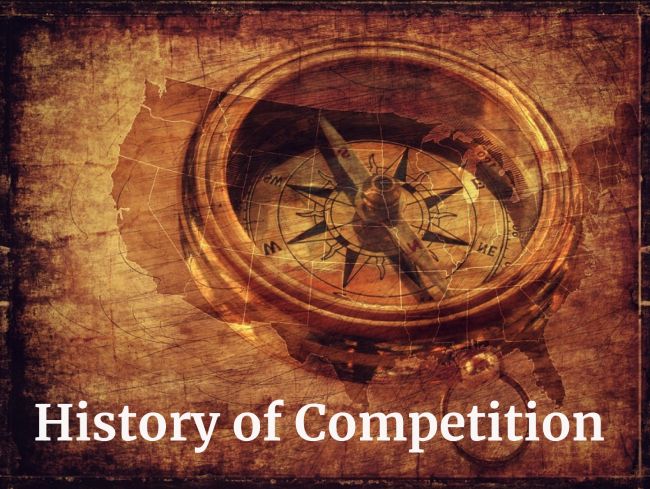Competitive cheerleading has a controversial and monumental past spanning only about the last sixty years. Despite the large body of critics, millions of kids and young adults train and compete annually for international recognition.
History of Competitive Cheerleading: The Early Days
The first instances of cheering began in the late 1800’s, but participants were only males and cheering involved simple chants. All Star gyms like Epic Sports and cheer organizations such as Varsity.com share the history of how this all-male activity became an athletic sport.
The Beginning Stages
Once women were allowed to cheer, developments in gear and routines began to grow rapidly.
- 1923 – University of Minnesota is the first group to let women cheer.
- 1948 – Lawrence Herkimer from Southern Methodist University holds the first summer cheerleading clinic.
- 1953 – Herkimer patents the pompon.
Competitive Cheer Gets Serious
Every serious sport, club, or activity needs governing bodies and recognition to further their impact and earn respect.
- 1960’s – Cheerleading competitions begin.
- 1961 – “Herkie” incorporates the National Cheerleaders Association (NCA).
- 1968 – International Cheerleading Foundation starts “Cheerleader All America” awards.
- 1972 – Title IX rule is passes allowing females to compete in sports through public schools.
- 1974 – Jeff Webb founds the Universal Cheerleaders Association (UCA), later known as Varsity Spirit Corp.

Modern Cheer Is Born
After the first competition is televised, competitive cheer gets the motivational boost it needs to garner more participation.
- 1978 – Competitive cheerleading is introduced, and the first competition is televised by CBS.
- 1987 – The American Association of Cheerleading Coaches and Administrators (AACCA) becomes the first organization to teach safety to cheer advisors and coaches.
- 1980’s – Late in the decade, All-Star Cheerleading begins with a focus on competitions rather than school-based cheerleading.
- 1999 – Cheerleading is officially recognized as an independent sport.
Official Recognition for Competitive Cheer
While many still debate whether any form of cheerleading is a sport, major organization begin to recognize it as such.
- 2003 – International All Star Federation (IASF) is formed to promote consistency in All Star rules and host “Cheerleading Worlds,” a final championship in competitive cheer.
- 2009 – International Cheer Union (ICU) submits an application for Sport Recognition to SportAccord/GAISF.
- 2010 – ICU submits application to International Olympic Committee (IOC) recognition.
- 2011 – USA Cheer and ICU introduce STUNT, which allows teams to compete in four rounds of competition against one other team.
- 2013 – ICU is recognized as the world governing body for the Sport of Cheer by SportAccord/GAISF.
- 2016 – 2016 ICU is provisionally recognized by the International Olympic Committee (IOC).
Important Cheerleading Innovators
While many famous men and women were once cheerleaders, there are a few people who contributed more to competitive cheer than most will ever know.
Johnny Campbell
Johnny Campbell is recognized as the “Father of Cheerleading” because he started the first true University cheerleading squad in 1898.
Lawrence Herkimer
Knowns as the “Grandfather of Modern Cheerleading,” Lawrence Herkimer started the idea that cheerleaders could use more training. He invented the pompon, spirit stick, and the jump known as the “Herkie,” and he formed the first cheer uniform supply company.
Jeff Webb
As founder of the Universal Cheerleaders Association (UCA), Jeff Webb is credited with transforming scholastic cheer into competitive cheer. His vision was to mash up athleticism with entertainment to take the sport to the next level. He also created the format for modern cheerleading competitions and developed new stunts.
The Influence of Competitive Cheerleading
Competitive cheerleading has gotten plenty of notoriety for daring routines that include tumbling, tossing, “flying,” and stunting. Occasionally, a cheerleader gets seriously injured during competition, and cheerleading gets some bad press, but that’s not the norm.
All Star Squads
As the popularity of cheerleading grew, so did the stunts, tumbling, and skill level of the cheerleaders participating. Today’s competitions feature high pyramids, advanced tumbling by most (if not all) members of the squad, and complicated dance routines.
Training
All Star gyms began cropping up in the late 1990’s and today, there are hundreds around the U.S. To get to the level of competition that is displayed today, cheerleaders practice for years and start as early as five and six years old. Squads for people of all ages train exclusively to learn cheerleading stunts and tumbling.
A New Industry
As routines become more complicated, organizations host more specialized squads and competitions. The need grew for camps, properly trained coaches, and special training in tumbling and stunts continues to grow. Today, competitive cheerleading boasts just over a quarter of a million participants annually in the U.S.
Looking Forward in Competitive Cheerleading
As cheerleading has grown, so have opportunities to compete. Girls, boys, men, women, and people of all ability levels can showcase their athletic prowess and crowd engagement skills on regional, national, and international stages.
